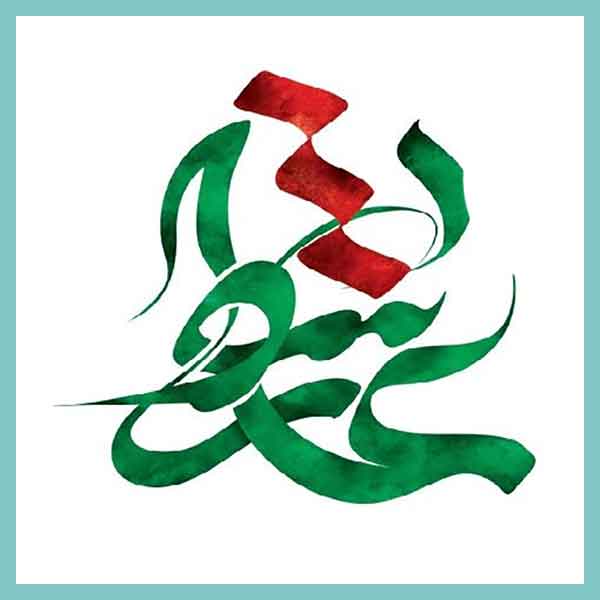Ashura

چیستیِ عاشورا
(مُناسب برایِ فارسی آموزانِ سَطح C1)
عاشورا (به مَعنایِ دهم در زبانِ عربی) مراسمِ عزاداری برای امامِ سومِ مسلمانانِ شیعه است. بَنا بر رَوایَتهای تاریخی، حُسین بن علی، نوه ی پیامبَر اسلام، در اِعتراض به حُکومتِ مُعاصرِ خود، در مَنطقه ی کَربَلا (در عراق امروزی) با سِپاهی اَندک به مقابله با سپاهِ خَلیفه (یزید بن مُعاویه) پَرداخته و در روز دهم ماه مَحَرمِ سال 61 هِجری قَمَری شهید شده است. این رُخدادِ تاریخی از مُهمترین وَقایِعی است که توسطِ مُسلمانانِ شیعه در طولِ تاریخ بَرجسته شده و به عُنوانِ یکی از مُهمترین نمادهای این مذهب درآمده است. عَلاوه بر ایران، سایِرِ مُسلمانان شیعه هر سال در دهه ی اول ماهِ مُحَرَم در عَراق، افغانستان، پاکستان، هند، سوریه، عَربستانِ سعودی، لبنان و ترکیه نیز در عاشورا به عَزاداری میپَردازند. ماهِ مُحَرَم، اولین ماهِ تَقویمِ هِجریِ قَمری است. به دلیل اینکه تَقویم قَمَری یازده روز کوتاهتر از تَقویمِ شَمسی است، تاریخِ برگُزاری مراسمِ عاشورا هر سال کمی به نسبتِ سال پیشَش تَغییر می کند.
What is Ashura?
(Farsi Level: C1)
Ashura means tenth in Arabic. Every year on Ashura, the tenth of Muharram, Shi’a Muslims hold a mourning ceremony to commemorate their third Imam. Imam Hussain, prophet Mohamad’s grandson, confronted his contemporary Caliph, Yazid, in protest of his illegal succession to Mu’awiya. According to narrative sources, Imam Hussain’s small army fought against Yazid’s army in Karbala, a region in Iraq, and Imam Hussain’s companions, including his brothers and sons, were killed in this battle. He was martyred on the 10th of Muharram, 679. This historical event is now one of the most significant symbols of Shi’ism. Ashura’s ceremony is held annually during the first ten days of Muharram in Iran, Iraq, Afghanistan, Pakistan, India, Syria, Lebanon, and some parts of Saudi Arabia and Turkey. Muharram is the first month of the Hijri calendar, a lunar one. Since this calendar is 11 days shorter than the Solar one each year, the date for holding this ceremony is slightly different from the previous year.
مَراسمِ عاشورا یکی از فَراگیرترین عَزاداری هایِ عُمومی در ایران مَحسوب می شود. یادآوریِ رنجِ امامِ سومِ شیعیان، خانواده و یاران او در جریانِ جنگ، زمینه یِ اصلیِ عزاداری در است. در فرهنگ شیعه، امام حسین نَمادِ کسی است که در برابرِ ظُلم سُکوت نکرد و با وجودِ یارانِ اَندَک، علیهِ بی عدالتی جنگید و به شَهادت رسید. مُهمترین آیین هایِ مَربوط به این دهه، راه اندازیِ دسته های عَزاداری، خواندنِ مَرثیه هایِ مُرتَبط با واقعه ی کَربَلا و سینه زَنی است. یکی دیگر از آیین های این روزها دادنِ غذای نَذری است. نَذری، غذا، خوراکی یا نوشیدنی است که به رایگان بین مردمِ عُمدَتاً نیازمند و به یادِ تِشنگی و گُرسنگیِ خانواده و یارانِ امام حُسین پخش می شود.
Ashura is one of the most prevalent mourning ceremonies in Iran. The main focus of this ceremony is retelling the torments and miseries of Imam Hussain, his family, and his friends. In Shi’i culture, Imam Hussain is a hero who fought against brutality and injustice, even though he had a small army and was martyred in a one-sided battle. Weeping, street procession, saying elegies about the martyrs and Imam Hussain’s relatives’ humiliation, and chest beating are among the main traditions of this mourning ceremony. Moreover, distributing food, called Nazri, among the poor to take vows is very common among Iranians and other Shi’as.
اَربَعین
در زبان عربی اَربَعین به معنیِ چهل است. در فَرهنگِ اسلامی، برای شَخصِ فوت شده، چهل روز عَزاداری برپا می کنند و لباسِ سیاه می پوشَند. معولاً در روز چهلم، اطرافیانِ مُتِوَفّی دور هم جمع می شوند و به یاد آن شخص عزاداری می کنند. مراسم اَربعین، در واقع عزاداری برای گرامی داشتِ چهلمین روزِ شهادتِ امام حسین است. در سال هایِ اخیر، این مراسم با شکوهِ بیشتر و با راه پیمایی به سمتِ کربلا برگزار می شود. در واقع، شیعیان این روز را برای نشان دادنِ همبستگی و قدرتِ سیاسی خود انتخاب کرده اند.
Arba’een
In Arabic, Arba’een means forty. In Islamic countries, people hold forty days of mourning, wearing black for their deceased. Then relatives and friends usually gather on the fortieth day to commemorate the deceased. Arba’een ceremony is held in commemoration of Imam Hussain and his companions’ martyrdom. In recent years, pilgrimage on foot for Arba’een has become popular and significant. Indeed, the Shi’a Muslims have picked this day for a huge assembly in Karbala to display their power and solidarity. Many pilgrims from Iran and other countries walk miles to Karbala and Imam Hussain shrine.
عاشورا و فرهنگِ بومی، هنر و ادبیات ایرانی
مَراسمِ یادبودِ عاشورا در طولِ تاریخ با فرهنگ هایِ بومی و مَحلیِ ایران آمیخته شده و به اَشکالِ گوناگون جِلوه میکند. مردمِ مَناطقِ مُختَلِف در ایران آیین ها و مراسمِ مَخصوصی برای عَزاداری عاشورا دارند و از ساز، زبانِ مَحَلی و فَرهنگ های خود برایِ بَرگُزار کردنِ این مَراسِم استفاده میکنند. برای مثال در بوشهر از سِنج و دَمام، و در میناب و بَرخی شهرهای جنوبِ ایران از بوق، اشکون و طَبل استفاده می شود. خواندنِ نوحه ها به زبانِ مَحلی از رایِج ترین اَشکال عَزاداریِ مُحَرم در شهرهای مُختلف به شمار می آیند. در عینِ حال رُسومِ مُختلفی همچون «نَخل گَردانی» در یزد، «شاخسِی» (شاه حسین) در آذربایجان، «چَمَر و چایینه» در ایلام و لُرستان، پُرسه در اَبیانه، «بیل زنی» در بَرخی نَواحیِ خراسان و بسیاری رُسومِ دیگر نیز وجود دارند که مُنحَصِر به یک شهر یا مَنطَقه خاص هستند.
Ashura in culture, art, and Persian literature
The commemoration ceremony of Ashura is modified locally by each region’s cultural beliefs and rituals. People in the different areas of Iran use their languages, musical instruments, and mourning rituals for Ashura. For instance, In Bushehr, playing Dammam, a twin hand drum, and Senj, a cymbal, is the main element of mourning. In Minab and other southern cities, playing Ashkun, a type of drum, and Bugh, a kind of wind instrument, is more common. Saying elegies and Marsiya in different languages also made this ritual diverse. In some cities, the rituals are more like collective performances. “Nakhl-gardani” in Yazd, “Shakhsei” in Azerbaijan, and “chamar chayine” in Ilam and Lorestam are a few examples.
در حُوزه ی نَمایشِ، بازنَمایی و اِجرایِ واقعه یِ عاشورا در قالبِ تَعزیه، شَبیه خوانی و مَقتَل خوانی توانسته اَشکالی از هنرِ نمایشی در ایران را به وجود آورده و حَفظ کند. در این اجراها، سَعی می شود مهمترین اتفاقاتِ جنگِ بین خَیر (امام) و شَر (خَلیفه) به تَصویر کشیده شود. بَهرام بَیضایی مُوَرخ و مُحَقِق مشهور سینما و تئاتر ایران مُعتقد است که تَعزیه یکی از مهمترین، فَراگیرترین و مُؤثِرترین شکل های هُنرِ نمایشیِ ایرانیان طی سده های میانه تا دوران معاصر بوده است.
Moreover, one of the earliest forms of theatre in Iran is Ta’ziye(h) and Magtal-Khani. In Iran, Ta’ziye(h) is a type of performance that reenacts the battle between good, Imam, and devil, the Caliph, in Karbala, and the death of Imam Hussain and his companions. Bahram Beyzayi, an eminent Iranian historian and researcher, believes that Taziye(h) has been one of the most salient and widespread performing art in Iran from the middle ages up to now.
عاشورا همچنین بازتابِ گُسترده ای در اَدبیاتِ فارسی داشته است. بسیاری از شُعرای فارسی زبان از دیرباز تاکنون این حادِثه را به شعر درآورده اند، یا در اشعار خود به آن اشاره کرده اند. عِده ای دیگر از رَهگذرِ صنایعِ ادبی به بازآفرینی و مُعَرّفیِ آن پرداخته اند. یکی از مشهورترین اشعار در این زمینه از مُحتَشم کاشانی، شاعر قرن دهم هجری با مَطلَعِ زیر است که در روزهای عَزایِ مُحرم بسیار شنیده می شود.
باز این چه شورش است که در خَلقِ عالَم است باز این چه نوحه و چه عَزا و چه ماتَم است
در داستان های فارسی نیز، اشاراتِ زیادی به رُخدادهایِ تاریخی و مَذهبی از جمله واقِعه ی عاشورا شده است. نَمادهایی چون قَهرمانِ مَظلوم (امام حَسین)، ظالمِ بدعَهد (یزید)، مردمی که به رَهبرِ خود پشت می کنند (مردمِ شهرِ کوفه) هَمگی در ادبیاتِ فارسی و حتی گُفتمان هایِ سیاسی ایران جایگاهِ ویژه ای دارند.
Ashura and the related events have also been widely reflected in Persian Literature. Many Iranian and non-Iranian poets either mentioned Ashura in their poems or turned the events into poetry. One of the most known Persian poems about Ashura and the martyrdom of Hussain is by the 16th-century poet Mohtasham Kashani, with the following opening line
bâz in če šureš ast ke(h) dar xalq-e ‘âlam ast = what is this sensation again amongst all creatures of the world,
bâz in če nohe(h)-o če aza-vo če mâtam ast = what is this sorrow, mourning, and lamentation
Historical and religious allusions, including Ashura, play a significant role in Persian prose. The symbolic representation of Imam Hussain, the oppressed, Yazid, the oppressor, and people disloyal to their leader, the Kufans, is used many times in Persian stories and even political discourse.


Leave A Comment